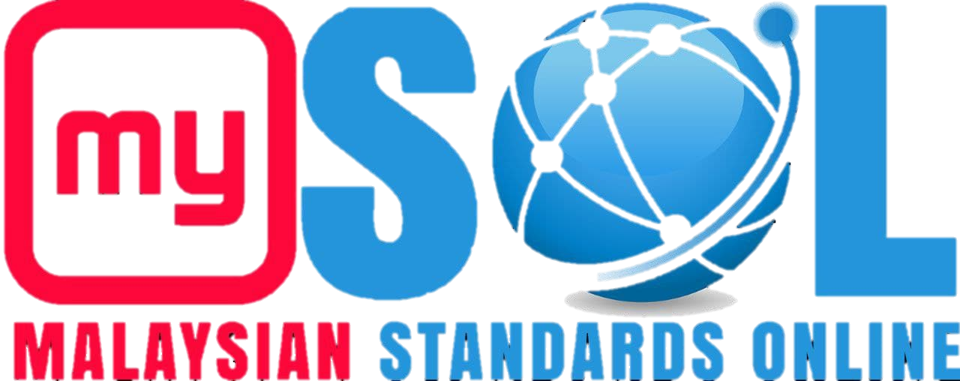Recreational diving services - safety related minimum requirements for the training of recreational scuba divers - Part 1: Level 1 - Supervised diver (ISO 24801-1:2007, IDT)
MS ISO 24801-1:2008 (CONFIRMED:2013)Status : Withdrawal with replacement
Format : PDF
This Malaysian Standard specifies the competencies that a scuba diver has to have achieved in order for a training organization to award the scuba diver certification indicating that he has met or exc ....Read more
NOT FOR SALE
"Please contact us if you are interested to purchase for reference."Method for the determination of ink cartridge yield for colour inkjet printers and multi-function devices that contain printer components (ISO/IEC 24711:2007, IDT)
MS ISO/IEC 24711:2010 (CONFIRMED:2015)Status : 1st Confirmation
Format : PDF
The Malaysian Standard is limited to evaluation of ink cartridge page yield for ink-containing cartridges (i.e. integrated ink cartridges and ink cartridges without integrated print heads) for colour ....Read more
Quality and performance of office equipment that contains reused components (ISO/IEC 24700:2005, IDT)
MS ISO/IEC 24700:2010 (CONFIRMED:2015)Status : 1st Confirmation
Format : PDF
This Malaysian Standard specifies product characteristics for use in an original equipment manufacturer's or authorized third party's declaration of conformity to demonstrate that a marketed product t ....Read more
Software engineering - NESMA functional size measurement method version 2.1 - Definitions and counting guidelines for the application of function point analysis (ISO/IEC 24570:2005, IDT)
MS ISO/IEC 24570:2006 (CONFIRMED:2015)Status : 1st Confirmation
Format : PDF
This Malaysian Standard:
a) specifies a method to measure the functional size of software,
b) gives guidelines on how to determine the components of functional size of software,
c
....Read more
Traffic and travel information (TTI) - TTI via transport protocol experts group (TPEG) extensible markup language (XML) - Part 2: tpeg-locML (ISO/TS 24530-2:2006, IDT)
MS ISO/TS 24530-2:2007 (CONFIRMED:2015)Status : 1st Confirmation
Format : PDF
This Malaysian Standard establishes the XML encoding of the method of Location Referencing used by TPEG applications.
TPEG applications contain the information required by a client TPEG
....Read more
Traffic and travel information (TTI) - TTI via transport protocol experts group (TPEG) extensible markup language (XML) - Part 3: tpeg-rtmML (ISO/TS 24530-3:2006, IDT)
MS ISO/TS 24530-3:2007 (CONFIRMED:2015)Status : 1st Confirmation
Format : PDF
This Malaysian Standard establishes the XML encoding of the method of the Road Traffic Message application.
The TPEG-RTM Application is intended to convey information to road users. The
....Read more
Traffic and travel information (TTI) - TTI via transport protocol experts group (TPEG) extensible markup language (XML) - Part 1: Introduction, common data types and tpegML (ISO/TS 24530-1:2006, IDT)
MS ISO/TS 24530-1:2007 (CONFIRMED:2015)Status : 1st Confirmation
Format : PDF
This Malaysian Standard establishes the top-level “containers” for TPEG messages in XML and the common data types that are used by tpegML applications (e.g. tpeg-ptiML). Inherently tpegML is desig ....Read more
Traffic and travel information (TTI) - TTI via transport protocol experts group (TPEG) extensible markup language (XML) - Part 4: tpeg-ptiML (ISO/TS 24530-4:2006, IDT)
MS ISO/TS 24530-4:2007 (CONFIRMED:2015)Status : 1st Confirmation
Format : PDF
This Malaysian Standard establishes the XML encoding of the method of the Public Transport Information application.
The Public Transport Information Application is intended to cover all
....Read more
Ergonomics - Accessible design - Auditory signals for consumer products (ISO 24500:2010, IDT)
MS ISO 24500:2012 (CONFIRMED:2023)Status : 1st Confirmation
Format : PDF
This Malaysian Standard specifies the auditory signals used as a means of feedback for operations or conditions of consumer products when used by a person with or without visual or auditory impairment ....Read more
Tips for assistive products for walking - Requirements and test methods - Part 1: Friction of tips (ISO 24415-1:2009, IDT)
MS ISO 24415-1:2011Status : Original
Format : PDF
This Malaysian Standard specifies requirements and test methods for the friction between the tips for assistive products for walking and the walking surface. This standard is not applicable to tips ma ....Read more
